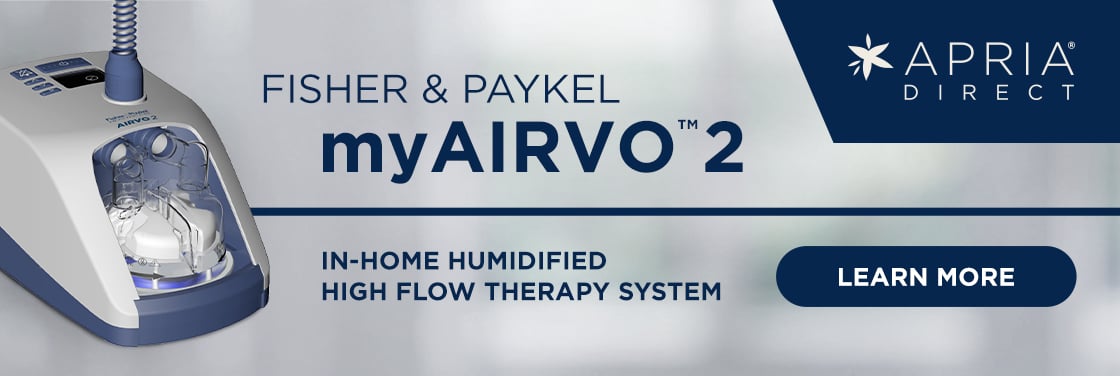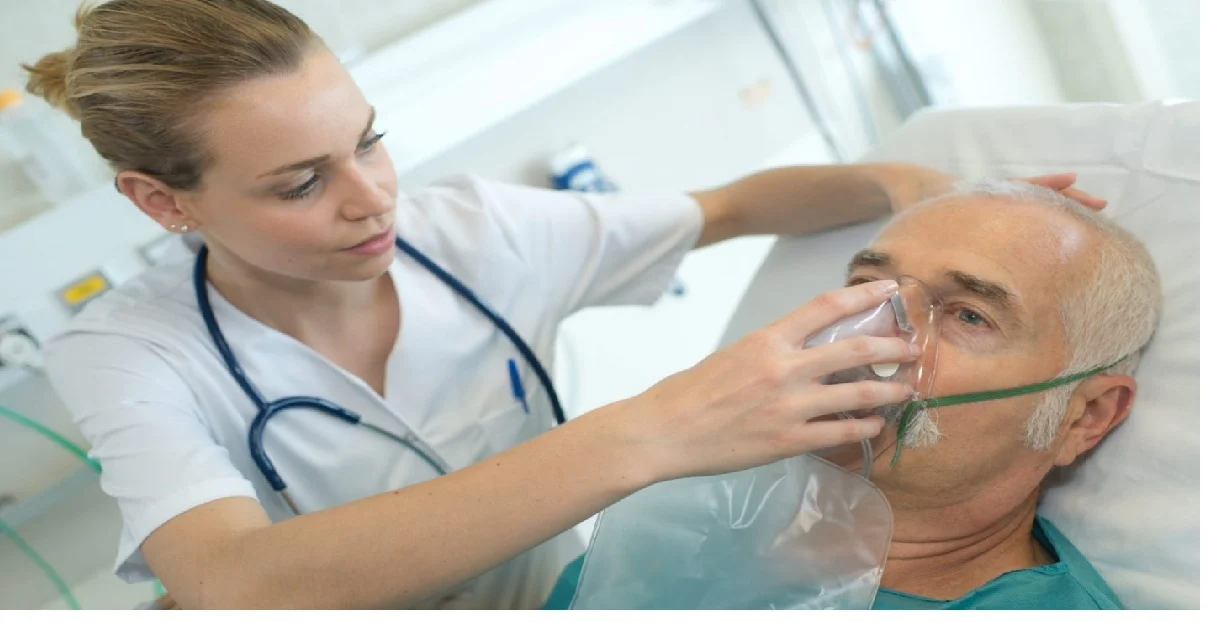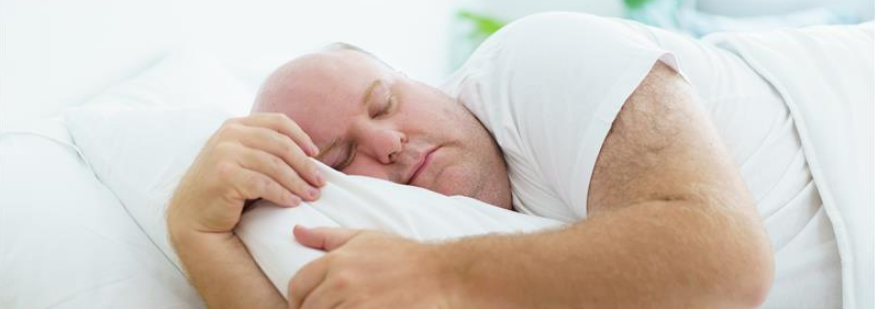With a Few Simple Adjustments Around Your Home, You Can Reduce Your Risk of COPD Flare-Ups.
Living with COPD is challenging—for both the people who have it as well as the people who care for them. Effectively treating COPD starts at home.
The fact is, your home environment may contribute to the triggering of hypoxia (shortness of breath) and COPD exacerbations.
Lesley Williams, Apria’s Market Clinical Trainer and a registered respiratory therapist, states, “Understanding the hazards is the first, best step to making your home COPD-friendly.”
Following are 8 tips to help you create a safer, more comfortable space where you can breathe more easily.
1. Make Your Home Smoke-Free
Smoking cigarettes is a leading cause of COPD. And it makes COPD worse. If you do smoke, stop!
Don’t allow anyone to smoke in your home. Secondhand smoke is harmful to people who don’t have respiratory conditions—but it’s even more dangerous for those with COPD. It can worsen your symptoms or cause serious exacerbations.
If you have friends or family who are smokers, insist they smoke outside. When they enter your home, ask them to wash their hands and, if possible, change their clothes, since harmful chemicals and irritants can cling to clothing.
Also, avoid fireplaces or wood-burning stoves, which produce tiny particles that can harm lungs. If you use either, make sure the area is well-ventilated.
2. Keep Oxygen Tubing Under Wraps
Oxygen tubing can pose problems for everyone in your household.
First, it’s a tripping hazard—for people with COPD as well as the people who care for them.
Sometimes, a person may unknowingly step on an oxygen tube—cutting off the supply of oxygen to the person who needs it.
Tubing can also get tangled in furniture. Some pets may even chew on it!
To reduce these problems, ensure that oxygen tubing remains close to the person using it.
3. Don’t Mix Oxygen and Cooking
Even though oxygen itself isn’t flammable, it can cause other materials to ignite more easily and burn more rapidly.
That’s why, whenever you are cooking, never, ever, allow oxygen cylinders in the kitchen.
Keep oxygen cylinders away from places where there’s fire or excessive heat, such as fireplaces, wood-burning stoves, candles, space heaters—even toasters and toaster ovens.
Aerosol sprays containing combustible materials and items containing grease or oil ignite easily, so store them away from oxygen.
4. Reduce Dust and Mold
Research shows that 25-30% of people with COPD also have allergies. And dust is a major trigger. That’s why it’s important to clean your house thoroughly. Vacuum floors and carpets and keep surfaces clean and dust-free.
Mold can also cause respiratory problems. Repair any water leaks promptly. And to keep your bathroom from getting overly damp, use an exhaust fan to move the moisture outside.
5. Ditch Dander
Like you, we love our pets. They give us unconditional love and become great friends. But we hate pet dander, which is another common trigger for COPD flare-ups and allergies.
Before you hit the hay, be sure to put your pets out of your bedroom.
Lesley Williams adds “Be sure your bedding is clean too. You may also consider getting special covers for your pillows and mattress.”
6. Clean Your House of Harsh Cleansers
Some cleaning supplies contain harsh chemicals that can cause breathing difficulties. These items include:
- Alcohol
- Ammonia
- Hydrogen peroxide
- Chlorine bleach
If you must use a strong cleanser, protect your lungs by opening a window or turning on a fan to circulate air, and wear a mask.
Better yet, safer, natural choices for household cleaning include unscented soap and water, lemon juice, vinegar and water, and, for scrubbing the cookie sheet, baking soda and water.
7. Steer Clear of Strong Scents
Products that smell good may be bad for you. Strong scents can narrow your airways and cause shortness of breath. As much as possible, avoid the following:
- Scented soaps and candles
- Air fresheners
- Incense
- Perfume
8. Manage Your Meds
It’s not unusual for people with COPD to be on multiple medications. To ensure you receive the full benefit of your meds, it’s important to have them well organized.
- Use a pill organizer to sort and store your daily meds
- Keep your meds in a place that is easy to get to—but be sure they are out of the reach of children and pets
- Bathrooms are a convenient place to store medicine, but the temperature and humidity level fluctuate. Store your meds in a cool, dry place
Effective COPD Care Begins at Home
Your home should be a place of comfort, safety, and security. And this is particularly important for people with COPD. Lesley Williams says, “Following the 8 tips outlined here will help you achieve that. And in the process, help reduce the frequency and severity of your symptoms.”
References
1. The COPD Caregiver’s Toolkit. National Heart, Lung, and Blood Institute.
2. Use Medical Oxygen Safely at Home. University of Michigan Health System.
3. Wiginton, K. (2021, January 4). Household Hazards for People With COPD. WebMD.
https://www.webmd.com/lung/copd/features/household-hazards-for-people-with-copd.
4. Higuera, V. (Updated 2020, April 6). Tips for Your Home If You Have COPD. Healthline.
https://www.healthline.com/health/copd/home-hacks.
LEGAL DISCLAIMER: Material in this newsletter is provided for general health education and informational purposes and to provide references to other resources only; it may not apply to you as an individual. While Apria Healthcare believes that the information provided through this communication is accurate and reliable, Apria Healthcare cannot and does not make any such guarantee. It is not intended to be a replacement for professional medical advice, evaluation, diagnosis, services or treatment (collectively, “medical treatment”). Please see your healthcare provider for medical treatment related to you and your specific health condition(s). Never disregard medical advice or delay seeking medical care because of something you have read on or accessed through this website. Reading this newsletter should not be construed to mean that you have a healthcare provider/patient relationship.


.png)


.png)
